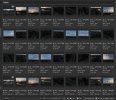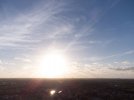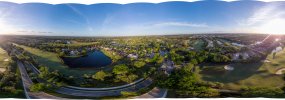After having made many spherical panoramas with my DSLR on a heigth of 1.50m (and sometimes a bit higher), I wanted to get some experience with making aerial panoramas without having to do a drone exam first, so I tried this with a DJI Mavic Mini 2. The performance of the camera in this device is impressive for such a small (1/2.3") sensor. However, there seem to be a number of shortcomings in the software (DJI Fly) for making spherical panoramas:
1. The standard size of the photos is 2000x1500 pixels, while the camera is capable of taking photos of 4 times this size (4000×3000 pixels). The result is therefore less detailed than possible.
2. Instead of shooting DNG (raw) images, the camera only takes jpg images in panorama mode. That is a pity considering the greater post processing flexibility of raw files.
3. The EV is determined during the first shot and cannot be corrected manually. The result of this (in sunny weather) is often that the sky is well exposed while the ground remains underexposed, even if the first shot is directed away from the sun. The nadir comes out very, very dark, like this:
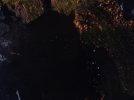
For panoramas with high contrasts, exposure bracketing would be welcome. However, the software does not allow this in panorama mode. That is a pity.
4. The controllable range of the gimbal is -90° to +20° when in extended mode, however the possibility for tilting upwards is not used when shooting a spherical panorama. As a result, the zenith hole is much bigger than necessary, as you can see when it is converted to cube-projection:

This makes it more difficult to edit the result. The only option left to make it fully spherical, is replacing the whole upper half of the panorama (in equirectangular projection) with a stock photo of the sky as I have done in this shot:
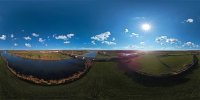
(Click here to see the interactive panorama)
In summary, the hardware of the Mavic Mini 2 is capable of so much more than the device's software allows when making spherical panoramas. This prevents the Mavic Mini 2 from optimum performance and that's a shame. Can anyone tell me if the Mavic Air 2 performs much better in panoramic mode, or does that use the same software? Is there an alternative to DJI Fly that is safe to use?
Pierre
1. The standard size of the photos is 2000x1500 pixels, while the camera is capable of taking photos of 4 times this size (4000×3000 pixels). The result is therefore less detailed than possible.
2. Instead of shooting DNG (raw) images, the camera only takes jpg images in panorama mode. That is a pity considering the greater post processing flexibility of raw files.
3. The EV is determined during the first shot and cannot be corrected manually. The result of this (in sunny weather) is often that the sky is well exposed while the ground remains underexposed, even if the first shot is directed away from the sun. The nadir comes out very, very dark, like this:

For panoramas with high contrasts, exposure bracketing would be welcome. However, the software does not allow this in panorama mode. That is a pity.
4. The controllable range of the gimbal is -90° to +20° when in extended mode, however the possibility for tilting upwards is not used when shooting a spherical panorama. As a result, the zenith hole is much bigger than necessary, as you can see when it is converted to cube-projection:

This makes it more difficult to edit the result. The only option left to make it fully spherical, is replacing the whole upper half of the panorama (in equirectangular projection) with a stock photo of the sky as I have done in this shot:

(Click here to see the interactive panorama)
In summary, the hardware of the Mavic Mini 2 is capable of so much more than the device's software allows when making spherical panoramas. This prevents the Mavic Mini 2 from optimum performance and that's a shame. Can anyone tell me if the Mavic Air 2 performs much better in panoramic mode, or does that use the same software? Is there an alternative to DJI Fly that is safe to use?
Pierre
Last edited:



